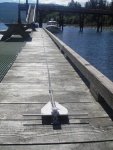hardee
New member
- Joined
- Oct 30, 2006
- Messages
- 12,637
- Reaction score
- 2
- C Dory Year
- 2005
- C Dory Model
- 22 Cruiser
- Hull Identification Number
- Brat # 2202
- Vessel Name
- Sleepy-C
Has anyone tried this device:
http://www.anchorsaver.com/Anchor_Saver/Home.html


It is called "anchor savor" and it looks like it makes sense to me, but I don't know if it is warrented in the PNW waters, or if it works or is worth the $99 for the size recommended for a CD 22. If is saved on anchor, one time It might be worth the price, but only if it works.
Opinions please.
Harvey
SleepyC :moon
http://www.anchorsaver.com/Anchor_Saver/Home.html


It is called "anchor savor" and it looks like it makes sense to me, but I don't know if it is warrented in the PNW waters, or if it works or is worth the $99 for the size recommended for a CD 22. If is saved on anchor, one time It might be worth the price, but only if it works.
Opinions please.
Harvey
SleepyC :moon

